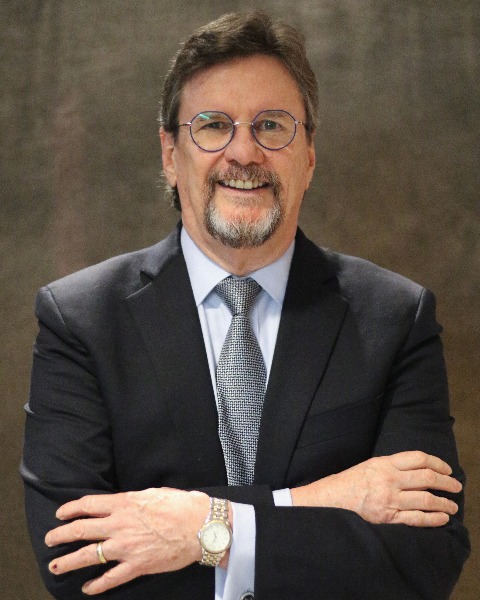Career/Personal Development (CPD)
PP1703 - Impact of AuD Student Loan Debt on Personal Finances
.jpg)
Amyn M. Amlani, PhD
President
Otolithic, LLC
Frisco, TexasFinancial Disclosures: Otolithic, LLC: Consultant (Ongoing), Employment (Ongoing), Grant/Research Support (Ongoing), Speaker/Honoraria (Ongoing), Speaker/Honoraria (includes speakers bureau, symposia, and expert witness) (Ongoing)
Non-Financial Disclosures: Director-at-Large, Academy of Doctors of Audiology
Section Editor - Economics, Hearing Health & Technology Matters
Victor Bray, PhD
Associate Professor
Salus University
Salus University Osborne College of Audiology
Elkins Park, PennsylvaniaFinancial Disclosures: I do not have any relevant financial relationships with anything to disclose.
Non-Financial Disclosures: I do not have any relevant non-financial relationships with anything to disclose.
Lead Presenter(s)
Presenter(s)
US student loan debt is the second-ranked consumer commitment, trailing only mortgage debt. Our previous research--presented at AAA 2022--highlighted that those graduate students enrolled in a professional Au.D. program, on average, are faced with a disproportionate increase in student debt compared to professional earnings. This comparison between debt and earnings is termed the debt-to-income ratio (DTI). The purpose of this poster is to demonstrate, using example cases, the effect that DTI can have on purchasing and borrowing power, and, ultimately, quality of life. We also discuss the prospective effect of DTI related to occupational-choice satisfaction.
Summary: Rationale/
Purpose: The US Bureau of Labor Statistics (BLS, 2016) reports that college tuition and fees, on average, increased by 63.2% between 2007 and 2021. Stated differently, college tuition that cost $20,000 in 2007 now costs $32,640 in 2021 for an equivalent purchase. This example equates to an average annual increase of 3.56% in college tuition and fees, which is nearly double the overall annual inflation rate of 1.85% for this time period. For professionals who received their Au.D. degrees through traditional, on-campus programs, especially over the past decade, the accrual of student debt (i.e., undergraduate plus professional/graduate) influences personal (i.e., quality of life) and professional (i.e., job satisfaction, professional longevity) qualities. The research poster is an ongoing effort by Amlani & Bray (2022) to evaluate the profession of audiology, with the intent of understanding the value (i.e., return on investment) of the current educational model and its impact on the future workforce of the profession.
Methods: We report only on the estimated average graduate/professional school student loan debt, by graduation year (2010 –
2021) from the National Center for Education Statistics (https://nces.ed.gov/) for the professions of Chiropractor (CHI), Nurse Practitioner (NP), Podiatry (DMP), Optometry (OPT), Physician Assistant (PA), Occupational Therapy (OT), Physical Therapy (PT), and from the American Speech-Language Association (ASHA) in Speech-Language Pathology (SLP) and Audiology (AUD). These estimates do not include average student loan debt for the respective undergraduate tracks. Workforce income data is available in Bray & Amlani (2021, 2022), with earnings data reported in the BLS database.
Results &
Conclusions: Our previous work showed that the average growth in AUD student loan debt between 2010 and 2020 increased by a slope rate of $2,774 per year, while Bray and Amlani found an annual wage/slope value of $1,730 over the same time period. The analysis also yielded a DTI of approximately 1.2, which means audiology wages are roughly 20% less than the student loan debt. This negative ratio has purchasing and borrowing consequences for professionals as they seek to acquire big ticket items such as a home or car or private practice. DTI is also a consideration by banking institutions related to interest rates for unsecured lines of credit. In this poster submission, examples between a positive and negative DTI will be introduced to highlight differences in purchasing and borrowing power.
Importance of Work: Increased audiology educational loan debt, coupled with a marginal base salary, is placing an increasing financial strain on the standard of living of recent graduates and future professionals. The findings from this analysis offer warning signs of a poor return on investment for future professionals pursuing a career in AUD and may be a primary driver for the current workforce shortage (Windmill & Freeman, 2013; Bray & Amlani, 2021, 2022). This workforce shortage has dire consequences not only for the profession, but for individuals with hearing loss in need of professional services.Learning Objectives:
